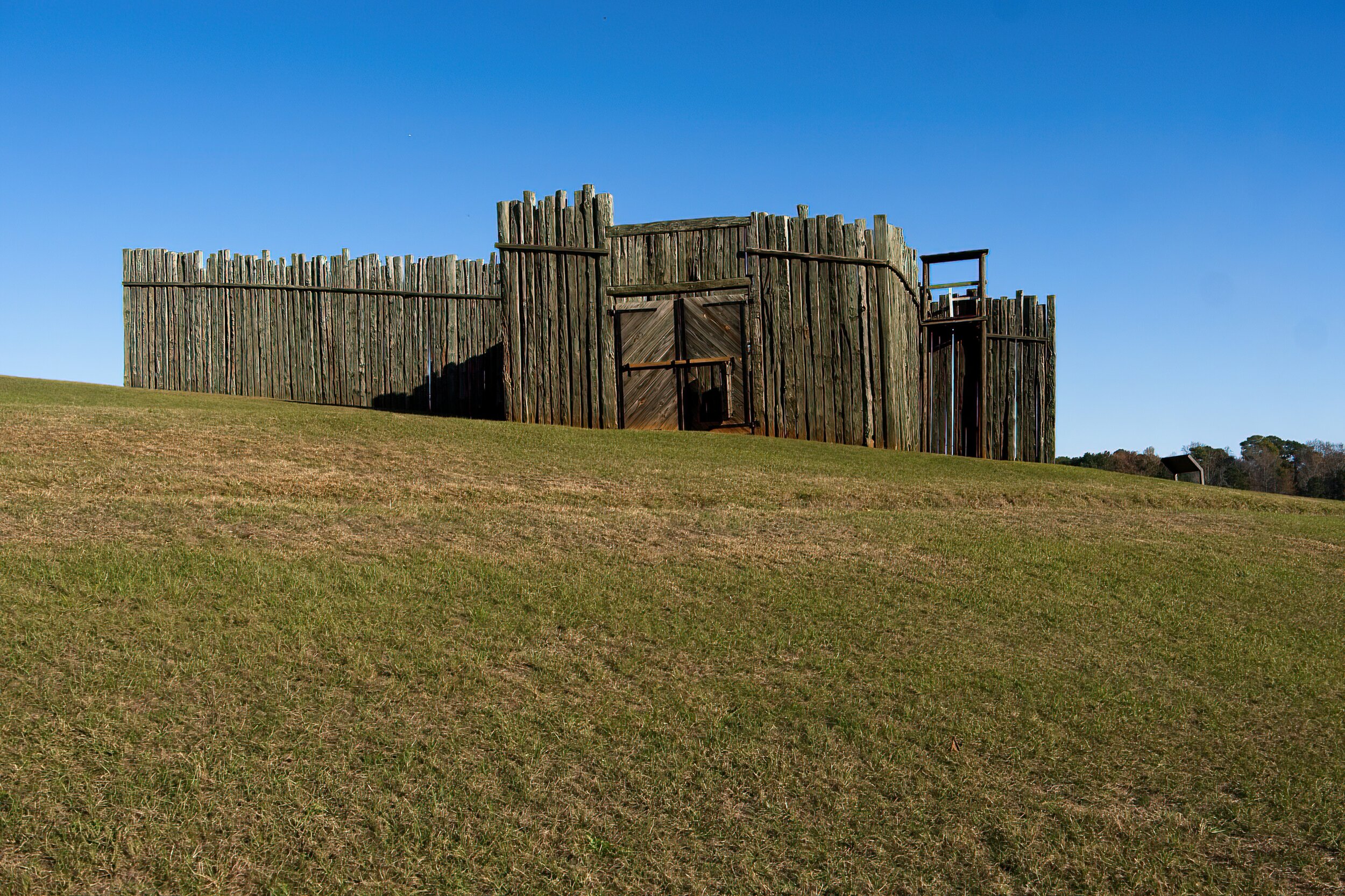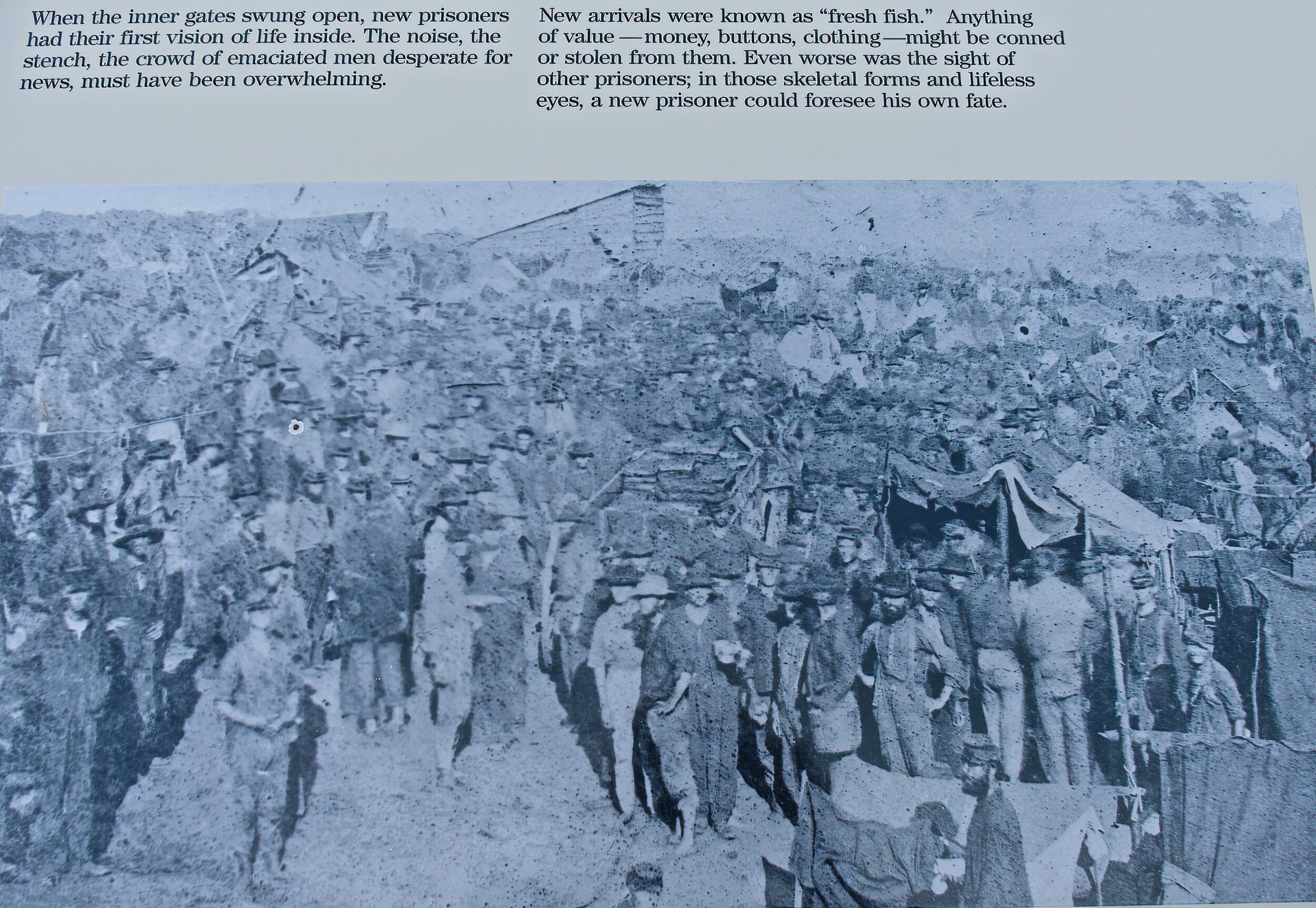Andersonville National Historic Site 496 Cemetery Road, Andersonville, GA 31711
Andersonville is a very small hamlet located in south central Georgia. The town has given its name to the Civil War Confederate prison but the actual name of the prison was Camp Sumter.
Cindy and I stayed in the village at a small town run RV park. There were some historic buildings in the town and a statue to the commander of the prison who was executed for his oversight of Andersonville. There was nothing specific wrong with the tiny park but the whole town felt neglected and oppressive. We did not eat out in the area - restaurants were about 15 miles away.
All the prisons of the Civil War era were bad in both the north and south. Disease was rampant everywhere, not just in the prisons. However, Andersonville was the definition of horrible. A camp very poorly designed for 8,000 men, it held as many as 38,000 at one time. The conditions were hellish and the bad reputation of the place was well deserved.
There was no shelter, little food, and the same water was used for drinking, bathing and toileting - a swampy stream that slowly oozed through the middle. There were no officers held here; the men devolved into gangs that robbed one another and set the rules for their group. The death toll of 1 out of 3 would have been much worse but soon after the prison opened a torrential rain storm uncovered a small spring nick-named Providence by the soldiers. The clean water saved many lives.
There is a visitor center with a small museum, a scattering of monuments, a museum dedicated to all American POWs, a couple of wall portions that were reconstructed, and a cemetery where 13,714 of the Union prisoners who died here are buried.
https://en.wikipedia.org/wiki/Andersonville_National_Historic_Site
A personal note: In researching our family tree, my son learned that a grandfather in our line, four generations back in my case, George W. Leasure, was a prisoner in Andersonville for just under a year, almost as long as the prison functioned. He was a member of the 103rd Pennsylvania Volunteers and served from the start of the war. His unit was assigned to Eastern NC after the disastrous Peninsula Campaign. He was wounded in a short battle for control of Kinston, NC. Sent to New Bern to recover, he rejoined his unit in Plymouth. Early in 1864, Lee sent a large contingent to Plymouth to get food and other supplies for the army besieged in Petersburg. Plymouth fell, the last battle the South would win, and George was a prisoner. They marched to Tarboro where a train eventually took them to Andersonville where he stayed about 11 months. We found his record at the Visitor Center but it did not provide much information. The few details gleaned from the official history of the regiment and some government papers make me want to know more about him. He died in his 50’s about 15 years after the war ended.
Cadillac’s Viewpoint: No tasty water lilies, and major depressing subject. Cadillac’s Elevation 1.5 Antlers
There is a garden area with water features and a statue after you exit the visitor center
The reconstructed gate
Historic Photo: What greeted you inside made one man say “Is this hell?”
The life saving spring
Shows the crude shelters that were built and the dead line you could not cross.
A scattering of monuments
The Pennsylvania monument is nestled among the 13, 700 + graves.








